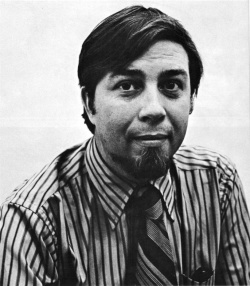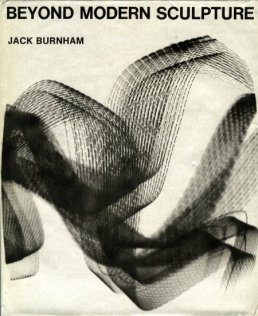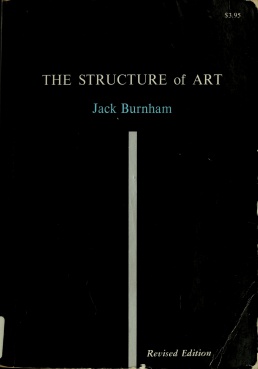Difference between revisions of "Jack Burnham"
| Line 5: | Line 5: | ||
|birth_date = {{birth date|1931|11|13|mf=y}} | |birth_date = {{birth date|1931|11|13|mf=y}} | ||
|birth_place = [[New York City]], New York | |birth_place = [[New York City]], New York | ||
| + | |death_date = {{Death date and age|2019|2|25|1931|11|13|mf=y}} | ||
| + | |death_place = New York | ||
|web = [[Aaaaarg::http://aaaaarg.fail/maker/5310645c334fe071e0b906de|Aaaaarg]], [[Wikipedia::http://en.wikipedia.org/wiki/Jack_Burnham|Wikipedia]], [[Academia.edu::http://www.academia.edu/Documents/in/Jack_Burnham|Academia.edu]] | |web = [[Aaaaarg::http://aaaaarg.fail/maker/5310645c334fe071e0b906de|Aaaaarg]], [[Wikipedia::http://en.wikipedia.org/wiki/Jack_Burnham|Wikipedia]], [[Academia.edu::http://www.academia.edu/Documents/in/Jack_Burnham|Academia.edu]] | ||
}} | }} | ||
| − | '''Jack Wesley Burnham Jr.''' | + | '''Jack Wesley Burnham Jr.''' (1931-2019) was an American writer on art and technology, who taught art history at Northwestern University and the University of Maryland. He was one of the main forces behind the emergence of systems art in the 1960s. |
{{TOC limit|3}} | {{TOC limit|3}} | ||
| Line 20: | Line 22: | ||
In 1970, at the invitation of Jewish Museum director, Karl Katz, Burnham curated ''[[Software - Information Technology: Its New Meaning for Art]]'', the only major show he has curated to date. In contrast to the numerous art and technology exhibitions which took place between 1966-1972, and which focused on the aesthetic applications of technological apparatus, ''Software'' was predicated on the ideas of "software" and "information technology" as metaphors for art. He conceived of "software" as parallel to the aesthetic principles, concepts, or programs that underlie the formal embodiment of the actual art objects, which in turn parallel "hardware". In this regard, he interpreted "Post-Formalist Art" (his term referring to experimental art practices including performance, interactive art, and especially conceptual art) as predominantly concerned with the software aspect of aesthetic production. | In 1970, at the invitation of Jewish Museum director, Karl Katz, Burnham curated ''[[Software - Information Technology: Its New Meaning for Art]]'', the only major show he has curated to date. In contrast to the numerous art and technology exhibitions which took place between 1966-1972, and which focused on the aesthetic applications of technological apparatus, ''Software'' was predicated on the ideas of "software" and "information technology" as metaphors for art. He conceived of "software" as parallel to the aesthetic principles, concepts, or programs that underlie the formal embodiment of the actual art objects, which in turn parallel "hardware". In this regard, he interpreted "Post-Formalist Art" (his term referring to experimental art practices including performance, interactive art, and especially conceptual art) as predominantly concerned with the software aspect of aesthetic production. | ||
| − | During his most prolific period as a writer, he taught art history at Northwestern University in Illinois, eventually becoming chairman of the art department in 1976. Later he taught at the University of California at San Diego, the School of the Art Institute of Chicago, Colgate University, and Williams College. In the 1980s he moved to the University of Maryland (College Park campus) and again chaired the art and art history departments. | + | During his most prolific period as a writer, he taught art history at Northwestern University in Illinois, eventually becoming chairman of the art department in 1976. Later he taught at the University of California at San Diego, the School of the Art Institute of Chicago, Colgate University, and Williams College. In the 1980s he moved to the University of Maryland (College Park campus) and again chaired the art and art history departments. Retired, he lived in Hyattsville, Maryland, immersed in Kabbalah. |
[[Image:Burnham_Jack_Beyond_Modern_Sculpture.jpg|thumb|258px|''Beyond Modern Sculpture'', 1968, [http://monoskop.org/log/?p=1196 Log].]] | [[Image:Burnham_Jack_Beyond_Modern_Sculpture.jpg|thumb|258px|''Beyond Modern Sculpture'', 1968, [http://monoskop.org/log/?p=1196 Log].]] | ||
| Line 30: | Line 32: | ||
** ''Kunst und Strukturalismus: die neue Methode der Kunst-Interpretation'', trans. Wilhelm Höck, Cologne: DuMont Schauberg, 1973. Review: [http://journals.ub.uni-heidelberg.de/index.php/kb/article/view/9497/3360 Gerhard Charles Rump] (kritische berichte, 1973). {{de}} | ** ''Kunst und Strukturalismus: die neue Methode der Kunst-Interpretation'', trans. Wilhelm Höck, Cologne: DuMont Schauberg, 1973. Review: [http://journals.ub.uni-heidelberg.de/index.php/kb/article/view/9497/3360 Gerhard Charles Rump] (kritische berichte, 1973). {{de}} | ||
* ''The Great Western Salt Works: Essays on the Meaning of Post-Formalist Art'', New York: G. Braziller, 1974. [http://theharrisonstudio.net/wp-content/uploads/2011/03/gwsw.pdf TOC]. | * ''The Great Western Salt Works: Essays on the Meaning of Post-Formalist Art'', New York: G. Braziller, 1974. [http://theharrisonstudio.net/wp-content/uploads/2011/03/gwsw.pdf TOC]. | ||
| + | * ''Dissolve into Comprehension: Writings and Interviews, 1964-2004'', ed. Melissa Ragain, forew. Hans Haacke, MIT Press, 2015, 352 pp. [https://mitpress.mit.edu/books/dissolve-comprehension] | ||
===Essays=== | ===Essays=== | ||
| Line 66: | Line 69: | ||
* [http://www.t-h-e-n-e-t.com/html/_film/pers/_pers_burnham.htm Page on Burnham by Lutz Dammbeck] | * [http://www.t-h-e-n-e-t.com/html/_film/pers/_pers_burnham.htm Page on Burnham by Lutz Dammbeck] | ||
* http://www.artforum.com/contributors/name=jack-burnham | * http://www.artforum.com/contributors/name=jack-burnham | ||
| + | * Obituary: [https://www.artforum.com/news/jack-burnham-1931-2019-78776 Artforum] | ||
| − | {{featured article}} | + | {{featured article}} [[Category:Systems art]] {{DEFAULTSORT:Burnham, Jack}} |
| − | [[Category:Systems art]] | ||
| − | {{DEFAULTSORT:Burnham, Jack}} | ||
Revision as of 14:02, 3 March 2019
 Photo from the Software catalogue, 1970. | |
| Born |
November 13, 1931 New York City, New York |
|---|---|
| Died |
February 25, 2019 (aged 87) New York |
| Web | Aaaaarg, Wikipedia, Using "Academia.edu" as base chain is not permitted during the annotation process. |
Jack Wesley Burnham Jr. (1931-2019) was an American writer on art and technology, who taught art history at Northwestern University and the University of Maryland. He was one of the main forces behind the emergence of systems art in the 1960s.
Biographical note
This section is based on Edward A. Shanken, "The House That Jack Built", Leonardo Electronic Almanac 6:10 (Nov 1998).
Burnham was born 1931 in New York City and grew up in Quincy, Massachusetts. He studied at the Boston Museum School and the Wentworth Institute before graduating from the Yale School of Art with a BFA in 1959 and an MFA in 1961. From 1956 to 1968, he worked intermittently as a signpainter and draftsman, but sculpture was his main focus, often including light (incandescent bulbs, neon, etc.; a photo of a ceiling-mounted piece from 1968, made of electro-luminescent tape and aluminum channels, appears in Beyond Modern Sculpture). He was a Fellow at MIT's Center for Advanced Visual Studies in 1968-9 and won a Guggenheim Fellowship in 1973-4 to work on a book about Marcel Duchamp.
His first book, Beyond Modern Sculpture: The Effects of Science and Technology on the Sculpture of Our Time, 1968, established him as the pre-eminent champion of art and technology of his generation. Building on this foundation, his second book, The Structure of Art, 1971, developed one of the first systematic methods for applying structural analysis to the interpretation of individual artworks as well as to the canon of western art history itself. In his articles "Systems Esthetics" (1968) and "Real Time Systems" (1969), Burnham already explored a systems approach to art: "A systems viewpoint is focused on the creation of stable, ongoing relationships between organic and non-organic systems". Many of his articles for Arts Magazine from 1968-70, where he was Associate Editor (1972-76) and Artforum from 1971-3, where he was Contributing Editor (1971-2), were collected in his third book, The Great Western Salt Works, 1973. These essays still remain amongst the most insightful commentaries on conceptual art, already suggesting what he now sees in retrospect as the "great hiatus between standard modernism and postmodernism".
In 1970, at the invitation of Jewish Museum director, Karl Katz, Burnham curated Software - Information Technology: Its New Meaning for Art, the only major show he has curated to date. In contrast to the numerous art and technology exhibitions which took place between 1966-1972, and which focused on the aesthetic applications of technological apparatus, Software was predicated on the ideas of "software" and "information technology" as metaphors for art. He conceived of "software" as parallel to the aesthetic principles, concepts, or programs that underlie the formal embodiment of the actual art objects, which in turn parallel "hardware". In this regard, he interpreted "Post-Formalist Art" (his term referring to experimental art practices including performance, interactive art, and especially conceptual art) as predominantly concerned with the software aspect of aesthetic production.
During his most prolific period as a writer, he taught art history at Northwestern University in Illinois, eventually becoming chairman of the art department in 1976. Later he taught at the University of California at San Diego, the School of the Art Institute of Chicago, Colgate University, and Williams College. In the 1980s he moved to the University of Maryland (College Park campus) and again chaired the art and art history departments. Retired, he lived in Hyattsville, Maryland, immersed in Kabbalah.


Publications
Books
- Beyond Modern Sculpture: The Effects of Science and Technology on the Sculpture of This Century, New York: George Braziller, 1968, 416 pp.
- The Structure of Art, New York: G. Braziller, 1971; rev.ed., 1973, 195 pp.
- Kunst und Strukturalismus: die neue Methode der Kunst-Interpretation, trans. Wilhelm Höck, Cologne: DuMont Schauberg, 1973. Review: Gerhard Charles Rump (kritische berichte, 1973). (German)
- The Great Western Salt Works: Essays on the Meaning of Post-Formalist Art, New York: G. Braziller, 1974. TOC.
- Dissolve into Comprehension: Writings and Interviews, 1964-2004, ed. Melissa Ragain, forew. Hans Haacke, MIT Press, 2015, 352 pp. [1]
Essays
- "Sculpture's Vanishing Base", Artforum 6:3 (Nov 1967), pp 47-55.
- "The Future of Responsive Systems in Art", in Burnham, Beyond Modern Sculpture, New York: G. Braziller, 1968.
- "Systems Esthetics", Artforum 7:1 (Sep 1968), pp 30-35, HTML; repr. in Burnham, Great Western Salt Works, 1974.
- "Systémová estetika", trans. Lenka Dolanová, c2012. (Czech)
- "Esthétique des systèmes", trans. Franck Lemonde, in Jack Burnham and Hans Haacke, Esthétique des systèmes, ed. & pref. Emanuele Quinz, postf. Caroline A. Jones, Paris: Les presses du réel, 2015. [2] (French)
- "Systems and Art", Arts in Society 6(2): "Confrontation Between Art and Technology", University of Wisconsin, Summer/Fall 1969, pp 194-204.
- "Real Time Systems", Artforum 8:1 (Sep 1969), pp 49-55; repr. in Burnham, Great Western Salt Works, 1974.
- trans. Franck Lemonde, in Jack Burnham and Hans Haacke, Esthétique des systèmes, ed. & pref. Emanuele Quinz, postf. Caroline A. Jones, Paris: Les presses du réel, 2015. [3] (French)
- "The Aesthetics of Intelligent Systems", in On the Future of Art, ed. Edward F. Fry, New York: Viking Press, 1970, pp 95-122, PDF, IA. Presented in 1969 as a talk within the lectures series The Future of Art at the Solomon Guggenheim Museum in New York.
- "Unveiling the Consort", part 1, Artforum 9:7 (Mar 1971), pp 55-60; part 2, Artforum 9:8 (Apr 1971), pp 42-51.
- "Duchamp's Bride Stripped Bare: The Meaning of the Large Glass", Arts Magazine, Mar-May 1972. Large Glass (1915-22) served as an architectural model for the installation of Burnham's exhibition Software.
- "Objects and Ritual: Towards a Working Ontology of Art", Arts Magazine 47:4, Dec 1972-Jan 1973, pp 28-32; repr. in Burnham, The Great Western Salt Works, 1974.
- "Contemporary Ritual: A Search for Meaning in Post-Historical Terms", Arts Magazine 47:7, Mar 1973, pp 38-41; repr. in Burnham, The Great Western Salt Works, 1974.
- "Art and Technology: The Panacea That Failed", in The Myths of Information, ed. Kathleen Woodward, Coda Press, 1980.
- 'The Systems Approach", in Margaretha J.M. Bijvoet, Art as Inquiry, New York: Peter Lang, 1997, pp 67-74.
Interviews
Literature
- Marga Bijvoet, "Art as a Set of Relations", ch. 3 in Bijvoet, Art As Inquiry: Toward New Collaborations Between Art, Science, and Technology, Peter Lang, 1997, PDF.
- "Die Kunst der Bezugsgruppe", ch. 3 in Bijvoet, Kunst-Forschung, n.d. (German)
- Edward A. Shanken, "The House that Jack Built: Jack Burnham's Concept of 'Software' as a Metaphor for Art", Leonardo Electronic Almanac 6:10, Nov 1998; repr. in Reframing Consciousness: Art and Consciousness in the Post-Biological Era, ed. Roy Ascott, Exeter: Intellect, 1999.
- Simon Penny, "Systems Aesthetics + Cyborg Art: The Legacy of Jack Burnham", Sculpture 18:1 (January/February 1999). [4]
- Matthew Rampley, "Systems Aesthetics: Burnham and Others", Vector b 12 (2005).
- Luke Skrebowski, "All Systems Go: Recovering Jack Burnham's 'System Aesthetics'", Tate Papers (Spring 2006).
- Courtney Fiske, "Jack Burnham's 'Real Time': Sculpture as System, 1967-1969", Grey Room 65, Fall 2016, pp 62-87.
- Luke Skrebowski, "Jack Burnham Redux: The Obsolete in Reverse?", Grey Room 65, Fall 2016, pp 88-113.